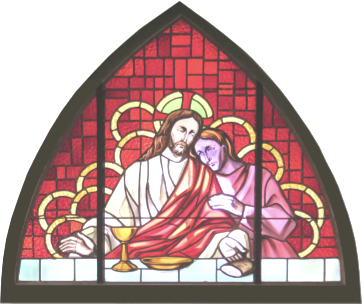Written by Dr. Eusebio Koh
Originally Published in the Filipino Journal: December 5, 2012, Volume 26, Number 22
The year 1962, fifty years ago, was a very memorable year. In April of 1961, the United States with Cuban rebels launched the failed Bay of Pigs Invasion of Cuba with the intention to rid the North American continent of the presence of communism. The USSR under Nikita Kruschev decided to arm Cuba with nuclear missiles to prevent future invasions. Those missiles could hit Washington D. C. in fifteen minutes if launched. The missiles were discovered by American U2 aircrafts in October, 1962 which led to the thirteen-day Cuban Missile Crisis. The United States under President John F. Kennedy was prepared to confront and block Russian ships from reaching Cuba. Fortunately, diplomacy won out and the tension was defused. That was probably the closest we came to nuclear war.
But the year 1962 was memorable for a most pleasant event – an event that enriches the world, specifically the world of the Catholics which today number over a billion. The Second Vatican Council (informally called Vatican II) is one important happening in the Catholic Church. It opened up the Church to the modern world. The council, a bright idea of Blessed Pope John XXIII, convened on 11 October 1962 and closed under Pope Paul VI on 8 December 1965. Pope John passed away in June, 1963 and Pope Paul reopened the council upon his election to the papacy. The popes who succeeded Pope John, namely Pope Paul VI, Pope John Paul I, Pope John Paul II and the present Pope Benedict XVI were participants in the Vatican II.
In talks before the Council actually met, Pope John had said that we needed to open the windows and the doors of the Church to take in some fresh air. He was talking about ecumenism, renewal, reform and getting lay involvement in the liturgy and other aspects of the Church. He invited the Protestant and Eastern Orthodox Churches to send observers to the Council and they accepted. There were also lay and women observers during the council meetings. Personally, I think it was Pope John who was the fresh air for through the Vatican II he brought the people closer to the Church and to the Lord Jesus Christ.
There were numerous documents approved by Council. A Synod of Bishops was established to preserve a close cooperation of the bishops with the Pope. There were decrees on religious freedom, decrees on missionary activity, on the life of persons in religious orders, education for the priests, and the role of the laity. One important document stated that the Jews of today are no more responsible for the death of Christ than Christians. A most accommodating document was on the dogmatic constitution on the Church. While claiming to be the “one, holy, catholic, and apostolic” Church of Christ, the document acknowledged that “many elements of sanctification and of truth are found outside its visible confines.”
Perhaps the most notable with immediate effects on individual Catholics was the decree to allow the celebration of the Mass in vernacular languages with greater participation of lay persons in the liturgy and the celebrant facing the congregation. Latin of course was not abolished as the liturgical language of the Roman Rite and is still the basis of translations as in the case of the new Roman Missal. Here and elsewhere, traditionalists can still attend Latin Masses.
Vatican II opened the Church to modern times and also reached back to biblical times by stressing the central role of the Sacred Scripture in our devotion. Bible study continues to be part of the activities of priest and parishioners.
For senior citizens like me, Vatican II has made changes in what and how the Church has become to us:
1. The Church is no longer some unapproachable Kingdom of God. We are part and parcel of the Church; we are the Church.
2. The Church has become less absolute in its relationship to non-Catholics and even non-Christians allowing that there are religious truths and aspirations outside the Church.
3. The Church is now understandable in its mission with the priest facing us and speaking our vernacular language.
4. The Church has invited us to be involved in the liturgy and the Eucharist. It has given value to us as thinking participants and listened to our opinions considering the increase of educated Catholics with advanced degrees in the arts (including theology) and sciences.
5. The Church has become a church of love, not of fear and coercion. It has given us freedom to act according to our clear conscience.
To mark the fiftieth anniversary of Vatican II, Pope Benedict XVI had declared the period from October 2012 to the end of November 2013 a “Year of Faith” and told parishes and religious institutions to find ways to celebrate and reaffirm the Creed. Either the Apostles’ Creed or the Nicene Creed is a statement of the Christian belief.

